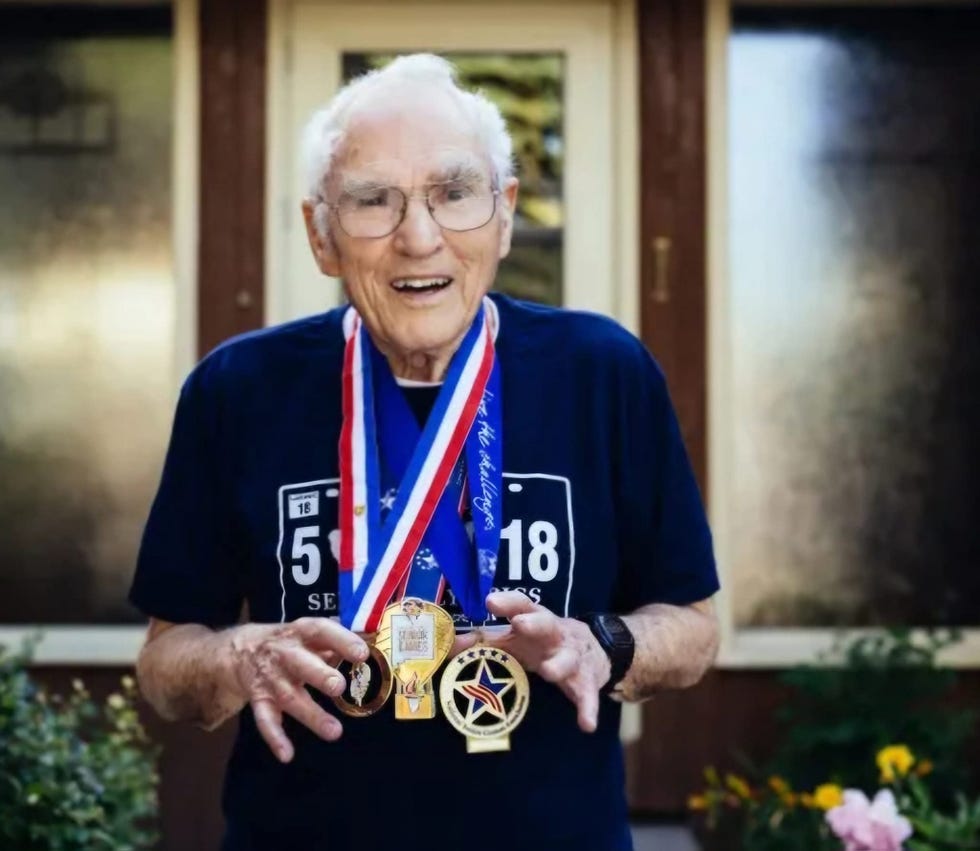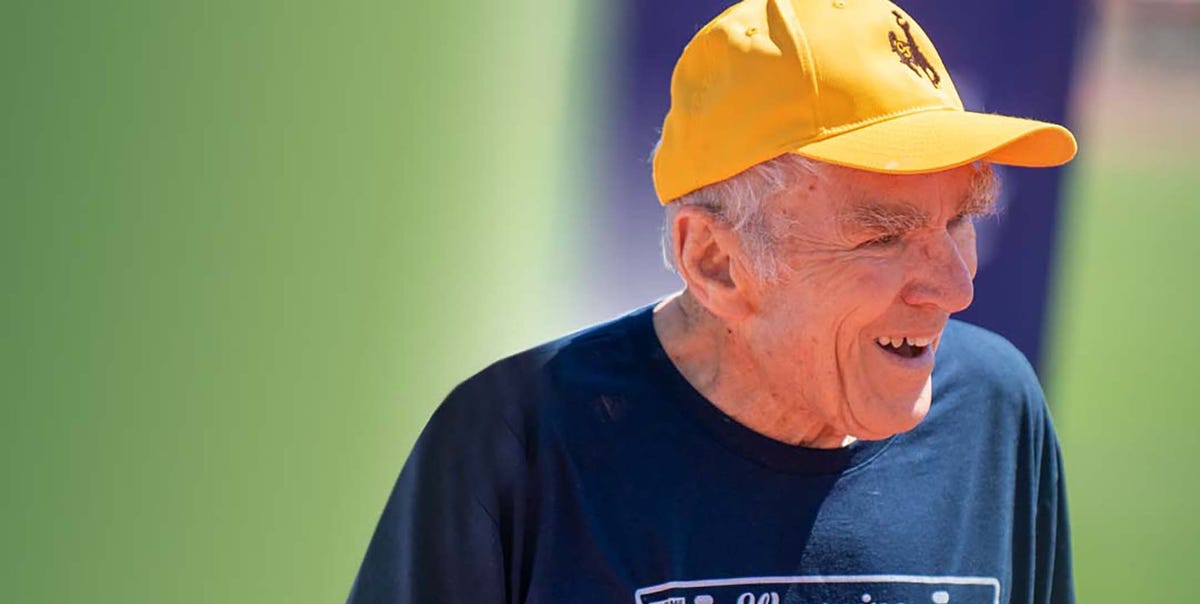I became more serious about running shortly after I moved to Laramie, Wyoming in 1963—more than 60 years ago. I was in my 40s at the time (now, I’m 105).
As the dean of the College of Arts and Sciences at the University of Wyoming, I incidentally had the assignment of designing the university’s new science center. It was a huge project and I was responsible for raising the funds for it, which felt nearly impossible and stressful at the time. To help deal with the stress, I started running.
The reason I choose running over any other sport is because it’s beginner-friendly and doesn’t require much equipment. When I started, all I had was a pair of running shoes and exercise clothes.
I quickly discovered beginning my day with a run helped improve my concentration and focus. It was through running I realized that not everything was important enough to get done and some things I could save for the next day. Running also gave me the opportunity to focus on something other than work and it helped me relax, which is why I fell in love with it.
I enjoyed running by myself, but the closest I’ve ever come to running with a buddy was when I had a furry friend named Rob. He was a German Shepherd who loved running, and whenever I had little motivationto get out of bed, he would come to my bedside, and stick his nose in my face. This was his way of telling me I had no other choice but to run, which made it easier to get out of bed on those days.
My favorite place to run is the golf course near my house (when people aren’t golfing—of course). When I first started, I ran based on time, and considered the amount of time I had before work: On days when I had a busy schedule, I ran less. If I had more time on my hands, I would spend more time outdoors clocking miles. I just went with the flow, rather following a set route.
The science center was completed in 1969 and I eventually retired from the university in 1990, but I kept running as a part of my regular routine and started racing. That’s when I became more intentional about running farther.
I decided to compete at the National Senior Games (NSG) in 1997 in Tucson, Arizona, when I was 78 years old. This biennial competition is hosted by the National Senior Games Association and it allows older athletes to compete in 25 different sports, including road races and track and field events. To qualify, you must place top four in your age division on a state level the year before. I ran the 5K and 10K that year.
In 2019, when I was 100, I set the record for the 100 meter in my age division at the Games with a time of 36.93, more than five seconds faster than the previous record. I still hold the number-one spot in that event. I was confident in my ability to run and it felt great to cross the finish line. I also won the 400 meter, 200 meter, and 50 meter that year, all of which still stand in the top three fastest times for those 100 and older.
Nowadays, I spend most of my time walking and strength training with bodyweight exercises to improve my balance. As a record holder and a Wyoming Senior Games hall of famer, here are my secrets to staying active.
Related StoryMake Exercise a Daily Habit
When I first started running, morning runs easily became a part of my daily routine, mainly because I found it easier to start my day by exercising, rather than splitting up my work day with a run.
Though I wasn’t cleared to run in this year’s NSG, exercise is still a part of my daily life.
Regular exercise, whether you’re running, strength training, or both, can help improve your quality of life. Adding balance exercises to your exercise routine can help improve your stability and agility as a runner. Also, as you age these moves can help lower your risk of falling and improve your mobility.
Try These Balance Exercises for Runners
Sign Up for Competitions
Participating in a competition gave me a goal to work toward and it could do the same for you. If you have a competition on your calendar, you have one more reason to stay consistent with your training. Plus, you get the opportunity to see how you stack up to other runners in your age group (and maybe earn some bragging rights if you win).

Courtesy E. Gerald Meyer
Pace Yourself
I learned the trick to running longer distances is to pace yourself, especially when you’re competing. You’ve got a long way to go, so it’s better not to give it your all in the first 100 yards. Instead, run at a pace that feels comfortable to you, and if someone passes you, so be it—as long as you run at your own speed and cross the finish line.
You’re not going to win them all; just finishing in a good time that you deem fit is good enough.
Become A Stronger Runner With These Exclusive Training ProgramsRelated Stories

Monique LeBrun is a health and fitness editor who is based in Easton, Pennsylvania. She covers a wide range of health and wellness topics, with a primary focus on running performance and nutrition. Monique is passionate about creating content that empowers runners to become the best versions of themselves. As an avid runner and parent, she loves spending time outdoors with her daughter, who often accompanies her on weekend runs as her personal mini run coach.

